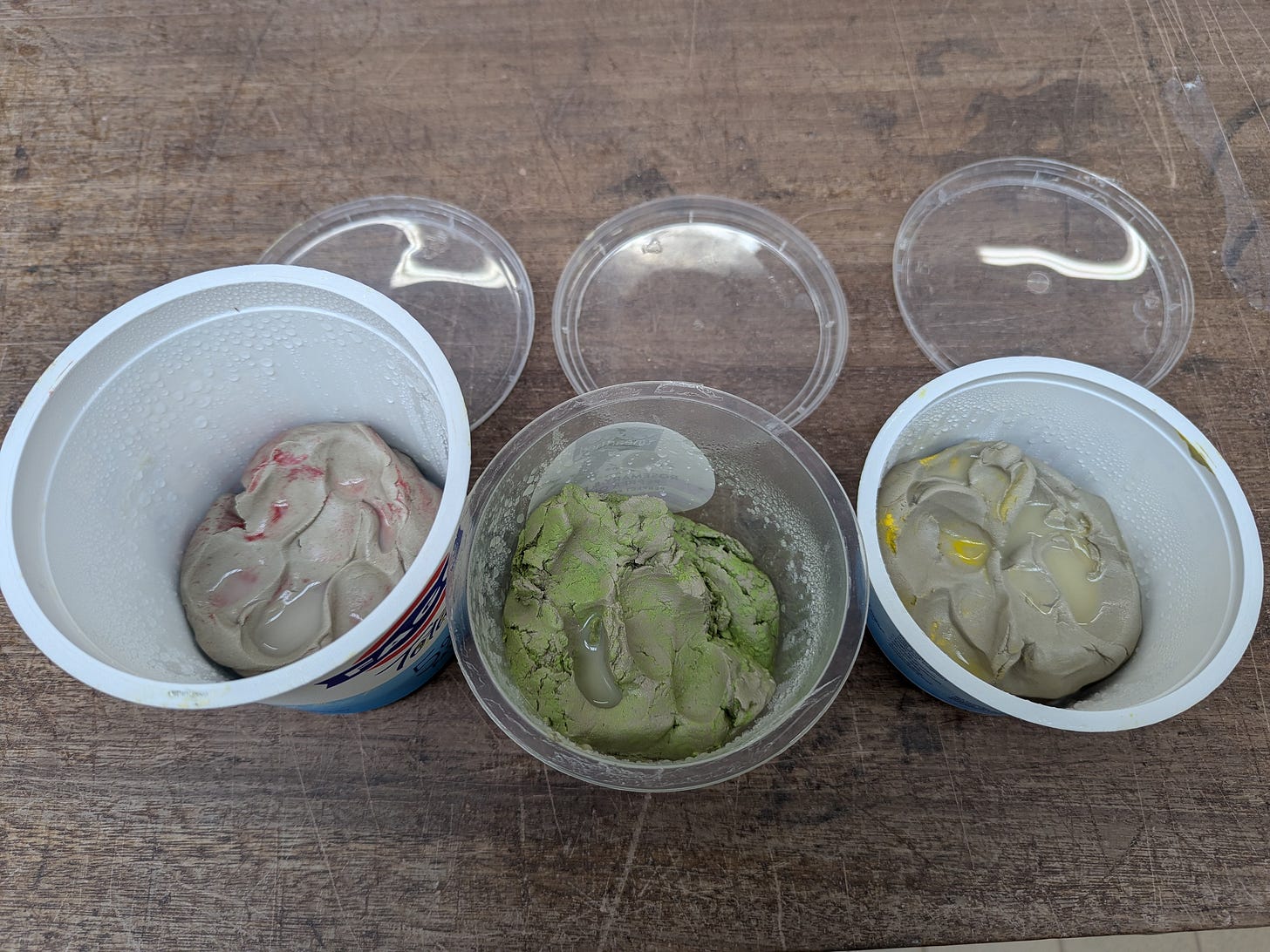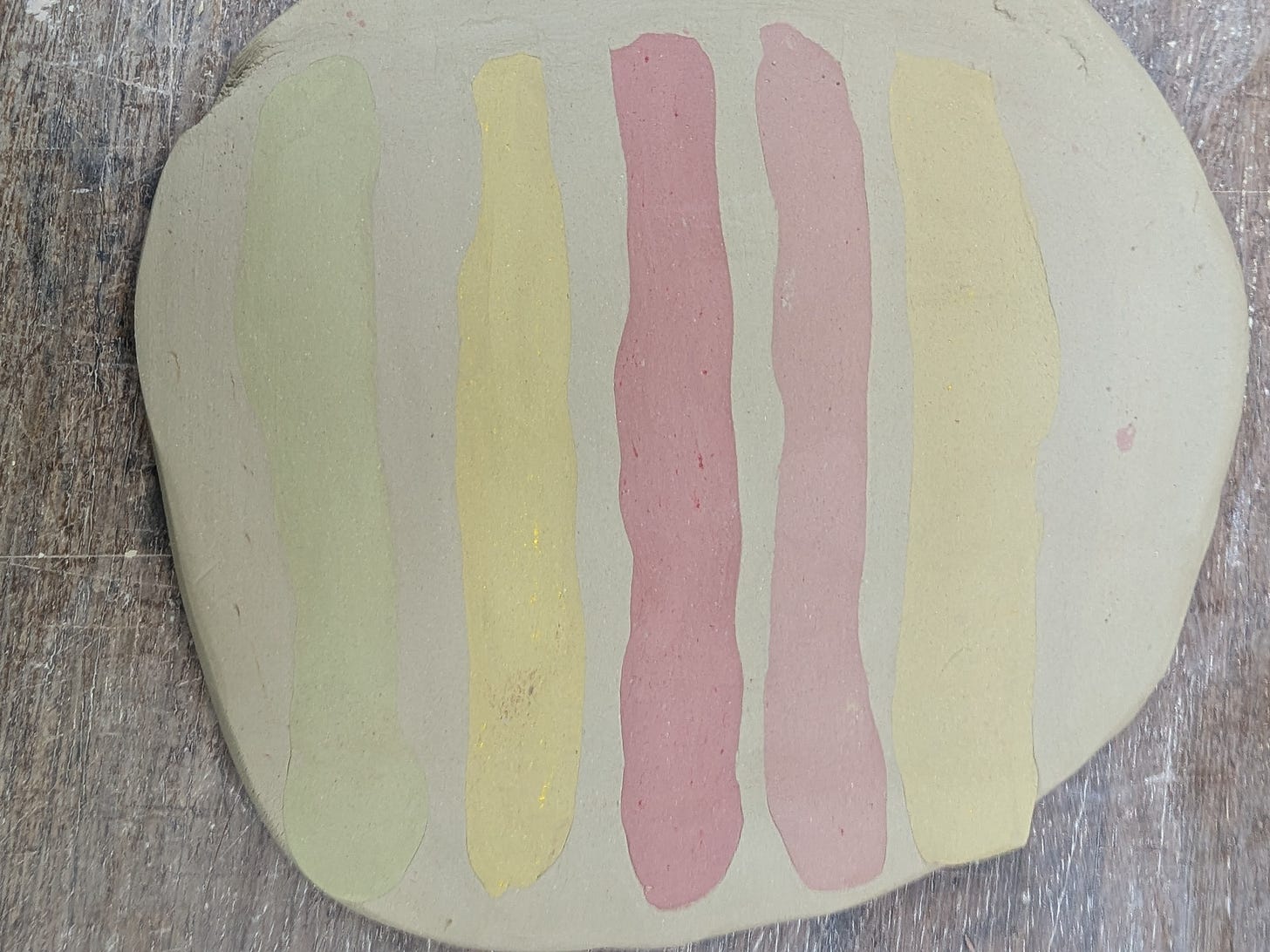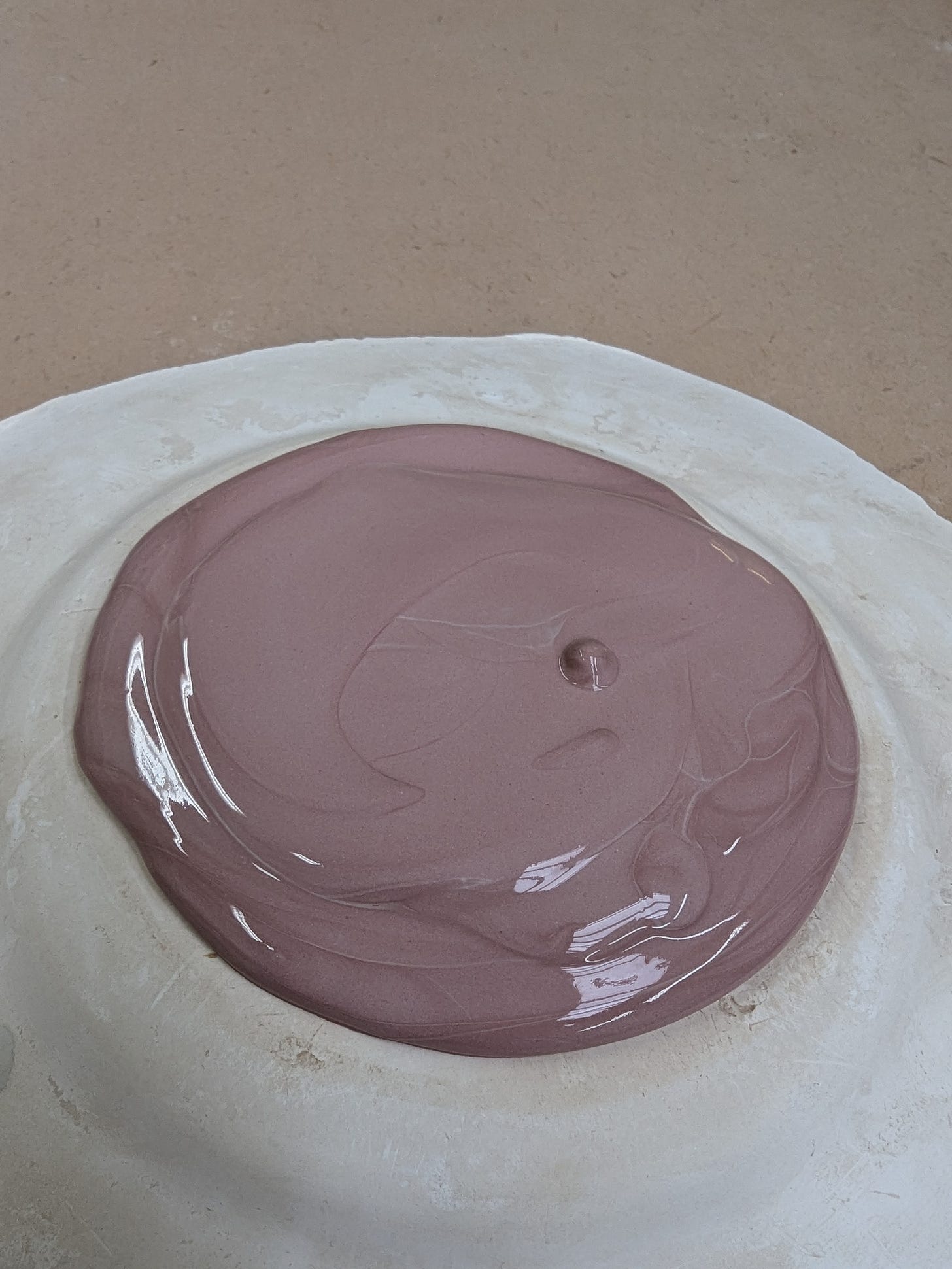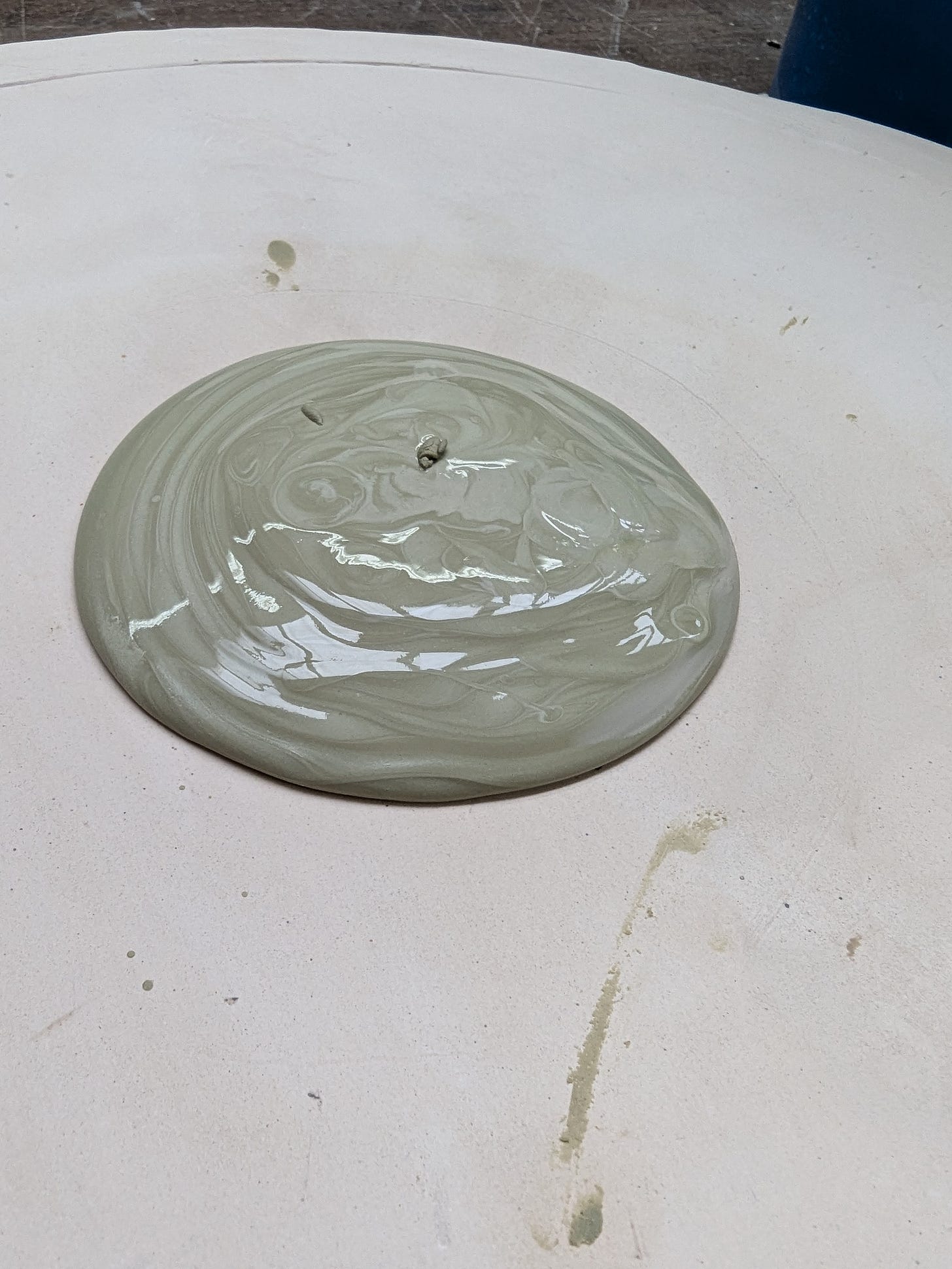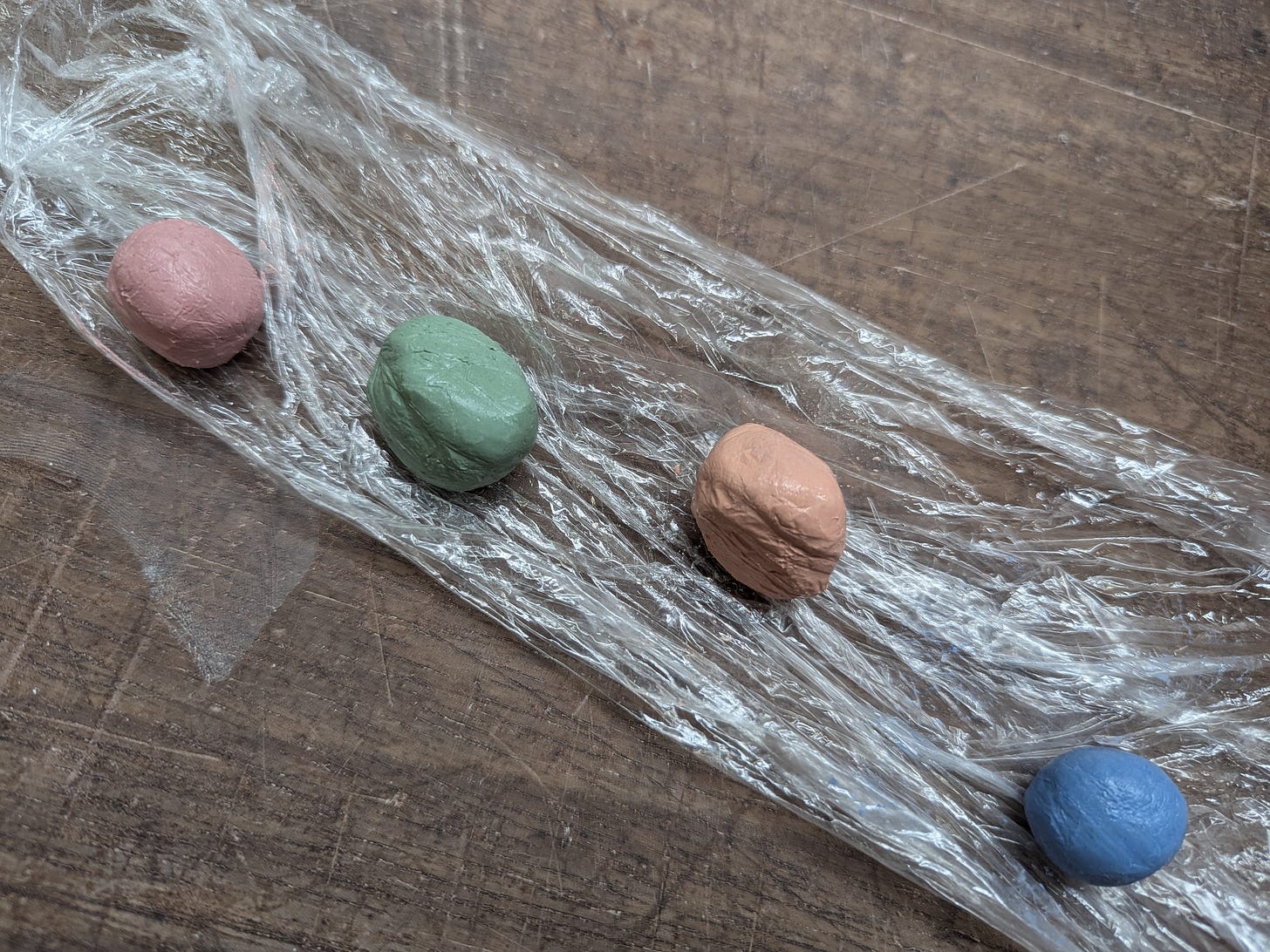Back to uni and I must confess I felt like my brain had emptied of all creative thought over the holidays, to the degree that I’ve been quite fearful of the return. It is almost as if my head switched off, for the first time in a long while, and re-engaging was a terrifying thought.
While the degree show blew me away it also highlighted how far away from my own show I feel.
I remain challenged by one idea now, another in a few minutes, and several more throughout the day with no decision on where to stick that pin.
I’m hell bent, however, on colours. They must be colourful, joyous and say fun. It’s personal. One person’s fun colour is most likely not another’s.
Consequently I’ve been colouring clay this week.
What a labour of boring love that is. I’m doing it to see if it’s a better option than using underglazes, slips or glazes.
I’ve pursued two methods so far. The first was to weigh the clay and then add 5% body stain in its powder form, and then a second batch of 10% colour. Obviously combining 100g of wet clay and 10g of dry powder isn’t a logical methodology. This became more apparent trying to wedge the dry powder into the clay fresh from the bag. Naturally the dry powder drew moisture from the clay making it very hard to blend in. The clay started drying out too much and then the residual powder started to fall out with every turn. A messy business. I put the whole lot in a lidded tub with some water overnight and returned to it the following day to re-wedge, which worked a treat.
You can see from the shots with the tubs how the powder was unevenly distributed at this point.
Once wedged, I inlaid the coloured pieces into some white ES5.
Other pieces I have simply made into tiles. These await firing.
The potters among you are probably screaming at this point BROGNIART’S formula. (Why caps? Because scary science makes me want to shout…I DON’T UNDERSTAND!!!)
And rightly so. Except that I am not a scientist and just looking at that equation made me feel such an abject, ignorant failure that I thought, yes, glazing is the answer.
But I stuck with it, not using the formula, and on day three went about colouring the clay a different way.
I filled a bucket with 5 litres of hot water and slowly added 5kg’s worth of blobs of fresh ES5 to it to create a slip.
This is the blunger mixing up. It’s loud and very splashy! It also has to sit completely flat on the ground so all those bucket makers who make tapered buckets, please make cylindrical, untapered buckets! This is a 5 litre Crown paint bucket which works really well. I have also sourced this week, at great value in my opinion, 20 litre lidded buckets from Euro Car Parts, ideal for this purpose, large quantities of glaze, clay, slips etc.
It became rapidly apparent that 5kg of clay and 5 litres of water do not make a slip. They make a very weak soup, at best a consomme! So I added another 4kg of clay and it resulted in the perfect consistency. It’s a long process and probably took the best part of two hours to make. Adding the clay slowly stops the blunger from burning out.
From there I took the approach to take 100ml of slip and add 10g of colour. I put it through a 100s sieve to achieve a consistent colour, working with a CTM intense red and a lime green of unknown provenance (not the wisest).
Then I put these on to plaster batts to dry out and re-wedge.
Once dry enough to form a ball I wrapped them in cling film and am saving them until next week to see what I can achieve.
Meanwhile I posed the question….I have a number of Nano porcelain decorating slips. Can they be put on to plaster batts and dried out to a sufficiently wedgable (?) consistency?
I had a go using four colours….
In loose terms yes, they reached a level where I could roll them into balls. These I then inlaid into some ES5 to see what would happen…..currently drying out.
It’s an interesting process. I’m not sure the porcelain angle will work with my intentions but step one brings me closer to knowing.
What I do know is that if you are time poor, colouring clay might not be for you. I am still learning which techniques will serve me best in the long run but I am time poor right now and I recall from interviewing Lara Scobie, for my essay, one thing which hit home for me was that she changed her working practice after she became restricted by time.




